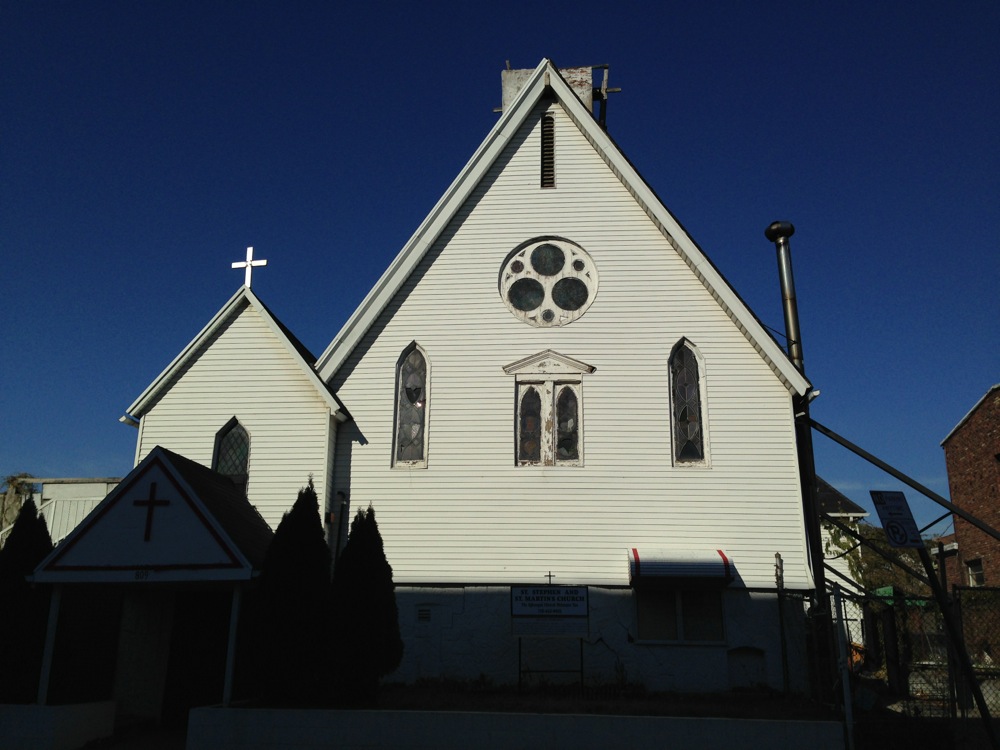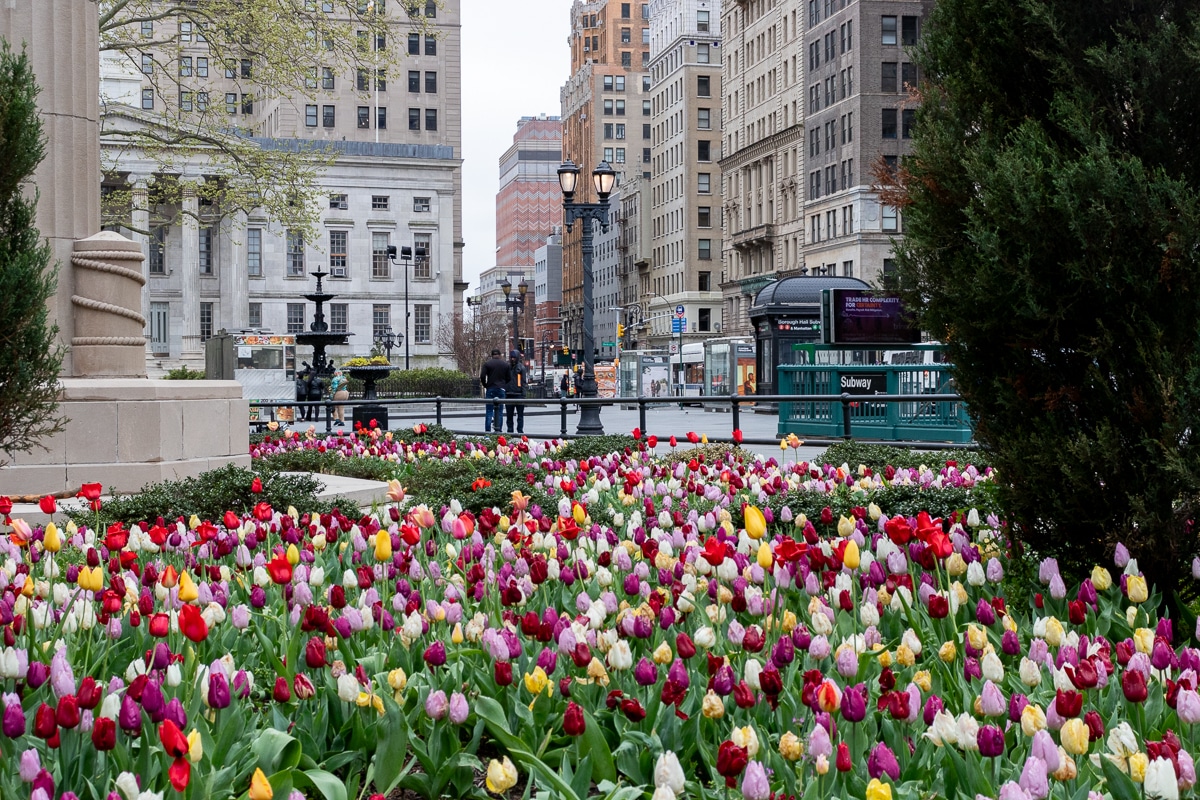Pre-Civil War-Era Wood Frame Church to Be Demolished for Apartments in Bed Stuy
Unfortunately, the construction boom has reached one of Brooklyn’s most notable structures: The pre-Civil War-era Carpenter Gothic (or New England Gothic) wood frame church at 809 Jefferson Avenue in Bed Stuy. The structure, which appears on an 1854 map and could be as old as the 1840s, is one of Bed Stuy’s oldest buildings. It’s…

Unfortunately, the construction boom has reached one of Brooklyn’s most notable structures: The pre-Civil War-era Carpenter Gothic (or New England Gothic) wood frame church at 809 Jefferson Avenue in Bed Stuy. The structure, which appears on an 1854 map and could be as old as the 1840s, is one of Bed Stuy’s oldest buildings.
It’s in a very old area in the northeast of the neighborhood that at the moment is sleepy and bare and dotted with the occasional mid-19th-century wood frame building. The area is not landmarked, and not likely to be, and we won’t be surprised if in 10 years it’s utterly transformed with Williamsburg-style glassy mid-rise apartment buildings.
Interior demo began in January, and the whole thing will be gone by the end of this month, according to DNAinfo. St. Stephen and St. Martin’s Episcopal Church has been unable to pay for upkeep, and sold the property to Notias Construction, which has promised to build a replacement church, the church’s rector told the paper. The developer plans a 41-unit apartment building with market-rate apartments geared toward people making about $70,000 a year, but has not yet filed a permit application with the DOB. Approved permits for a new two-story church building have been in place since 2002, although it’s not clear if the developer intends to move forward with the same plans and permits.
The property at 807-809 Jefferson Avenue is enormous: a 100-by-175-foot lot. The church measures 30 by 80 feet and takes up a small part of the property. The church could have built apartments on part of the lot and asked the developer to repair and restore the existing building, which both parties told DNAinfo was beyond saving.
Above, the church in November. The steeple has been missing for years.
Apartments to Replace 146-Year-Old Bed Stuy Church [DNAinfo] GMAP
Building of the Day: 809 Jefferson Avenue [Brownstoner]
Walkabout: Betrayed by a Common Hammer [Brownstoner]
Update: Commenter Amzi Hill tells us the church appears on an 1854 map and could be as old as the 1840s. We have updated the story.
The photo above, by Nicholas Strini for PropertyShark, shows the building on January 22, after interior demo had begun and the stained glass windows and pews removed.
Above, the church and part of the big empty lot next to it in November.
Above, an ancient illustration of the new church that was supposed to be erected at 807 Jefferson Avenue by 2003. Below, photos of the church in 2011 by Suzanne Spellen.
















I don’t think pre-civil war era churches should be destroyed, period. There are alternative solutions to expand a church such as refurbishing the existing structure. Landmarking is one way to inspire people to think in new creative ways – without destroying historic buildings. So there you have it, Bainbridgedad, I am both for the seeing the church flourish and for preserving the building.
Greenstuy, I do tihnk you have a valid and worthy goal. I also think the “alternatives” might be more difficult or unworkable for certain churches. Still, however, I do blieve that landmarking efforts like those you’ve proposed will force a much needed public discussion on finding workable solutions that everyone can benefit from.
are you doing the financing for these projects too?
it is not ridicules, buildings in much sadder condition than this have been well refurbished and remain useful buildings for today. There is a solid old wood church, the Old Wailing Church, in Edgartown MV that is a wonderful tourist attraction, performance space, and place of worship. St. Stephen and St. Martin’s could be a similar asset to the community. It would draw visitors/tourists to the area and serve the community in many ways. Any replacement church will lack any character that would make it useful to the community in all these other ways.
Manhattan has been ruined over the decades–only those with apartments in the clouds seam to like it any more. Brooklyn shouldn’t give up what makes it unique just so we have towers like Manhattan.
communities need more than blogs and netflix.
even today with all our electronics we still need places to be with each other and do things besides consume goods, food and alcohol.
One way to save local churches is to join them. St. Stephen and St. Martin’s Episcopal Church is run by a vestry made up of partitioners who have been elected to run the church.
Get involved in the church life, help make the building work for the community and it will can be saved. Look to any of the local churches you may have on your block. Make them into vibrant local community buildings. All Brooklyn Churches were build by donations from the communities they served. People with far less comforts and food contributed to build and then maintain the amazing Brooklyn church structures. Support your local church and landmarking isn’t necessary.
I actually kind of agree. Times have changed, and the neighborhood may not need as many churches as once were needed. “Interesting” shouldn’t be the only criteria for landmarking, as landmarking is a very blunt instrument with serious repercussions.
Can you link to that 1854 map? I’ve been working on dating our house and the oldest map we found was 1857, but we know the lot was sold in 1849 when the farm there was cut up into residential lots… I’d love to be able to narrow it down even farther!
Montrose, I am going to check out the Landmark committee at CB3 office as Amzi suggests and see if there are more like minds. It would be great to discuss with you further, too. I will contact you offline.